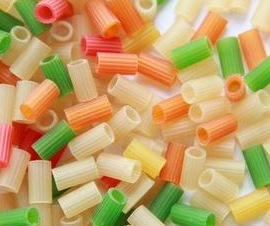Producción de alimentos rebozados y empanados para freír
Battered and breaded foods, such as chicken nuggets, fish sticks, and vegetable fritters, are popular for their crispy texture and flavorful appeal. The production of these pre-fried products involves multiple steps to ensure consistency, quality, and safety. This article outlines the key stages in manufacturing battered and breaded food substrates, from ingredient selection to packaging.
1. Selección y preparación de los ingredientes
- Core Ingredients:
- Fuentes de proteínas: Chicken, fish, shrimp, or plant-based alternatives (e.g., tofu, tempeh).
- Verduras: Zucchini, mushrooms, onions, or peppers.
- Preparation:
- Cleaning, cutting, or shaping into uniform sizes (e.g., strips, chunks, or patties).
- Pre-cooking (optional) for certain products to ensure thorough cooking after frying.
2. Battering Process
Battering provides a foundational layer that helps adhesion of breading and enhances moisture retention.
- Batter Types:
- Tempura Batter: Light, crispy, and airy (made with flour, cornstarch, and carbonated water).
- Beer Batter: Similar to tempura, with beer adding flavor and leavening.
- Adhesion Batter: Thicker batter (with starch, gums, or proteins) to bind breading to the product.
- Aplicación:
- Ingredients are dipped or conveyor-sprayed with batter to coat evenly.
- Excess batter is removed via shaking or air knives.
3. Breading Application
Breading adds crunch, flavor, and visual appeal.
- Breading Types:
- Traditional Bread Crumbs: Fine or coarse crumbs from wheat bread.
- Panko: Japanese-style flakes for extra crispiness.
- Seasoned Crumbs: Pre-mixed with herbs, spices, or cheese.
- Gluten-Free Options: Rice flour, cornmeal, or almond flour-based crumbs.
- Aplicación:
- Breading is applied via rolling, dusting, or air-pressure systems.
- Multiple layers may be used for thicker coatings.
4. Pre-Frying (Par-Frying)
- Purpose:
- Sets the coating to prevent sticking during packaging.
- Partially cooks the product, reducing final preparation time for consumers.
- Process:
- Products are briefly fried in oil (e.g., 170–190°C) for 30–60 seconds.
- Oil type (e.g., sunflower, palm, or canola) is chosen for stability and neutral flavor.
5. Freezing and Packaging
- Flash Freezing:
- Rapid freezing at -30°C to -40°C preserves texture and prevents ice crystal formation.
- Embalaje:
- Vacuum-sealed or nitrogen-flushed bags to maintain freshness and prevent freezer burn.
- Labeling includes cooking instructions (e.g., oven baking, air frying, or deep frying).
6. Quality Control and Safety
- Parameters Monitored:
- Coating uniformity, color, and adhesion.
- Oil absorption levels (target: 10–20% by weight).
- Microbial safety (e.g., Salmonella, Listeria) via routine testing.
- Equipment Hygiene:
- Regular cleaning of conveyors, batter tanks, and fryers to prevent contamination.
7. Innovations and Trends
- Health-Conscious Formulations:
- Baked instead of fried options.
- Whole-grain or low-sodium breading.
- Plant-Based Alternatives:
- Battered cauliflower, jackfruit, or pea protein-based “chicken.”
- Sostenibilidad:
- Use of recycled packaging and responsibly sourced oils.
8. Challenges
- Oil Management: Maintaining oil quality to avoid off-flavors and excessive acrylamide formation.
- Coating Adhesion: Preventing batter/breading separation during freezing and reheating.
- Allergens: Managing cross-contamination for gluten, soy, or dairy-containing products.
Conclusión
The production of battered and breaded food substrates combines culinary art with food engineering to create convenient, enjoyable products. From ingredient prep to freezing, each step is optimized for texture, flavor, and safety. As consumer preferences evolve, manufacturers continue to innovate with healthier, sustainable, and plant-based options, ensuring these crispy treats remain a staple in global diets.








